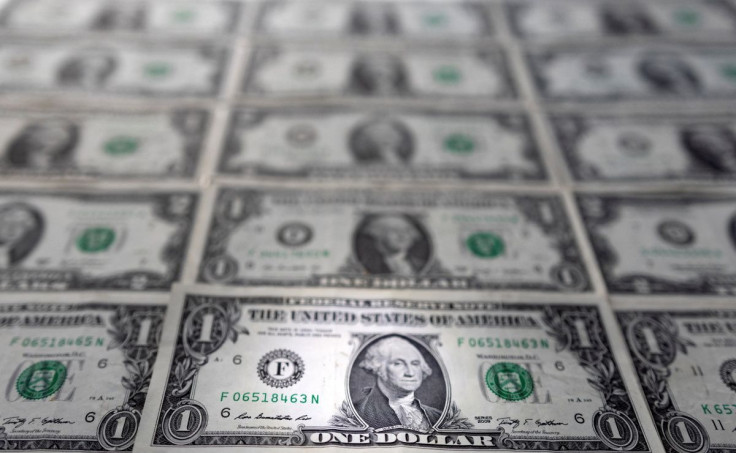Dollar Stumbles As Markets Rethink Interest Rate Path

The U.S. dollar slipped on Friday and was heading for its first weekly decline this month as traders dialled down bets on where interest rates may peak and brought forward their views on the timing of rate cuts to counter a possible recession.
A significant factor this week has been the fall in oil and commodity prices, which has eased inflation fears and allowed equity markets to rebound. This has eroded the safe-haven bid that has been boosting the dollar against other major currencies.
By 1210 GMT, the dollar index, which measures the U.S. unit against six major currencies, was flat to marginally weaker around 104.3. It rose 0.2% on Thursday, mostly driven by a euro decline after weak business activity data reduced bets for European Central Bank tightening.
The dollar, up around 9% this year, has lost some of its shine since investors started betting the Federal Reserve could slow the rate-tightening pace following another 75 basis-point increase in July. They now see rates peaking next March around 3.5% and falling by nearly 20 bps by July 2023.
This rate hike repricing sent 10-year Treasury yields to two-week lows, while the dollar index has lost 0.4% this week.
For now though, Fed Chair Jerome Powell stressed the central bank's "unconditional" commitment to taming inflation. Fed Governor Michelle Bowman too supported 50 bps hikes for "the next few" meetings after July.
Analysts noted also that terminal rate repricing was happening across the developed world as recession fears grow.
"The repricing in the market...has held the dollar back but an offsetting force is the risk of a global downturn. The Fed is pretty much on autopilot. Until they take their foot off the brakes, dollar weakness will be limited," BMO Capital Markets strategist Stephen Gallo said.
"Rate hikes are being taken out of the euro and sterling markets too," he noted.
The yen, sensitive to changes in U.S. yields, was flat % around 135 per dollar but looking to snap a three-week losing streak during which it tumbled to successive 24-year lows beyond 136.
"If U.S. Treasury yields have peaked, so has dollar/yen. If you combine better Japanese GDP growth and a peak in U.S. yields it's a benign environment for yen strength," said Mizuho senior economist Colin Asher, who expects yen around 130 by year-end.
The euro likewise was flat, ceding a small earlier rise. It fell 0.4% on Thursday, following weaker-than-expected PMI figures for June and Germany's decision to trigger the "alarm stage" of its emergency gas plan.
The greenback's slide boosted even commodity-focused currencies such as the Australian dollar and Norwegian crown. The Aussie ticked up 0.12% to $0.6903, though it remained on track for a third straight weekly decline.
The Norwegian crown, fresh off Thursday's 50 bps rate hike, was up 0.5% at 9.92, off an earlier session high around 9.88. It also rose 0.5% against the euro.
The Swiss franc touched the highest since early March against the euro at 1.0055, rising half a percent on the day.
© Copyright Thomson Reuters 2024. All rights reserved.




















